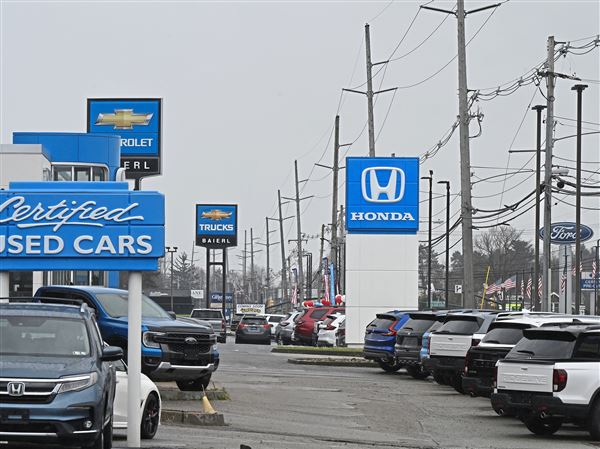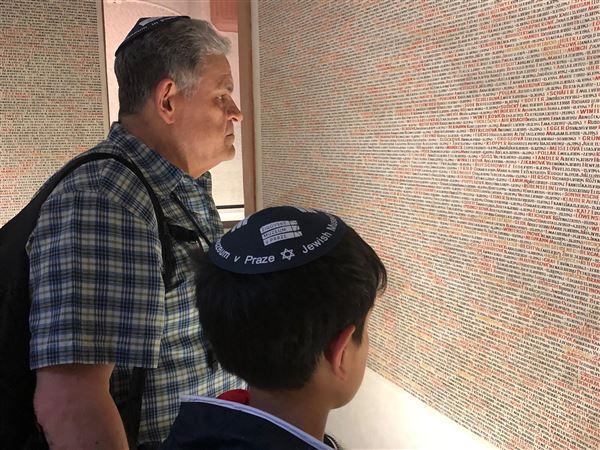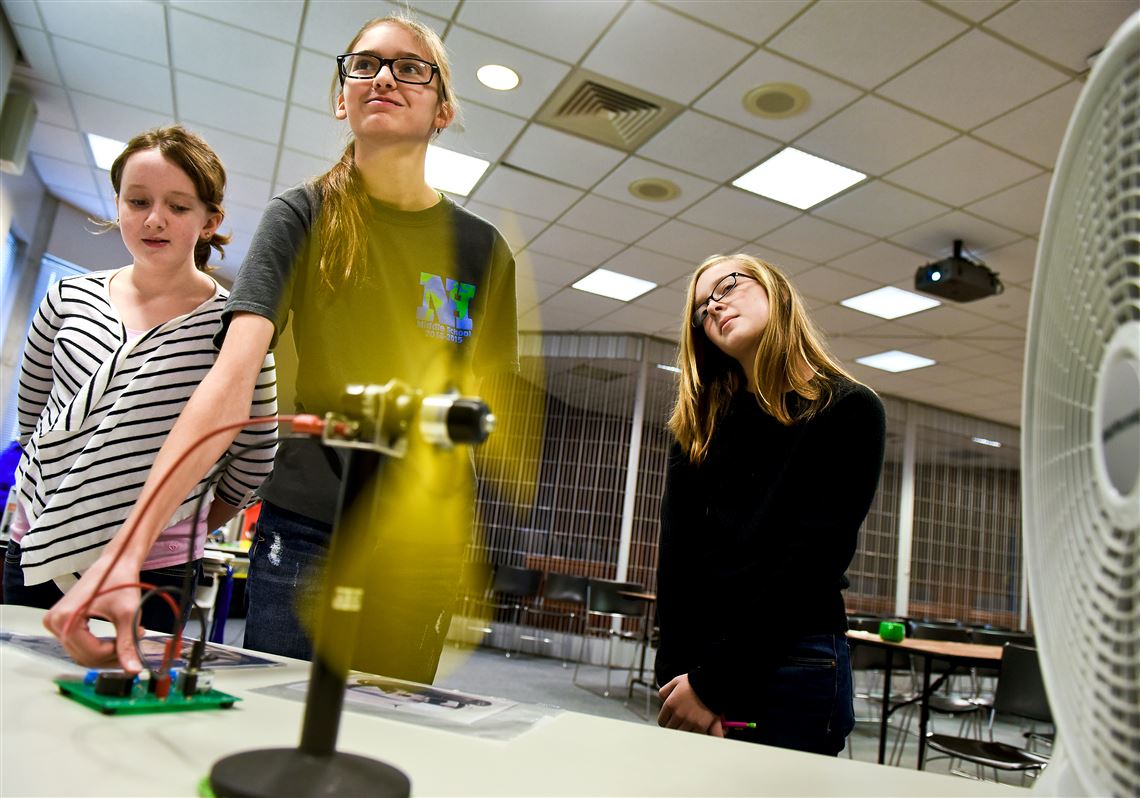The question to the small group of middle school girls was whether nuclear power was renewable or nonrenewable energy, and eighth-grader Cassidy Goodworth had the answer.
“I think nuclear is nonrenewable because you can’t ‘un-blow-it-up,’ ” she said.
Students in the Gifted And Talented Education, or GATE, program at North Hills Middle School spent several class periods Oct. 26 learning about energy sources in a presentation by RiverQuest.
“This experience is eye-opening,” said seventh-grader Julia Parks.
RiverQuest employees Debbie Larson and Susie Toman presented information on various types of power from the traditional — coal, oil, natural gas and nuclear — to the renewable — biomass, solar, wind and geothermal.
The nuclear industry is “very highly regulated,” Ms. Larson said, and provides energy for a long time. The Navy’s nuclear submarines have to surface only to procure food for the sailors, she added.
Coal provides 40 percent of the world’s electricity and is the “dirtiest-burning fossil fuel,” Ms. Larson said.
In 2013, traditional resources provided 90 percent of power.
There are three problems with the nonrenewable resources — they eventually will run out or become limited in supply; burning them emits greenhouse gases; and the extraction process, such as mining or drilling, can damage nature, she added.
Ms. Toman talked about the lines for gasoline that she remembers from her youth. If a gasoline shortage happens now, “it will be catastrophic,” she said.
Renewable resources are newer and offer great promise, the women said.
Hydroelectric power is a “very awesome resource,” Ms. Toman said. “Water is a finite source, but it is a renewable resource because we can use it over and over again.”
Solar is renewable because the sun is going to be around for a long time, she said. A station showing the power of solar energy contained a solar charger that was charging an iPod and a cell phone. The station also had a skeleton and a flower that were dancing in the light. And solar-powered mini-cars moved across the table when the light was shone on them.
The RiverQuest office is on a boat, which is powered by three solar panels.
Wind power only works in certain areas, Ms. Toman said. “You can’t put a wind farm in a populated area,” she said.
But having wind turbines on top of skyscrapers in Pittsburgh could provide power for all of Downtown, she said.
Areas such as Pittsburgh, however, could never completely rely on such power, Ms. Toman said. “This is Pennsylvania. It’s not sunny every day, and it’s not windy every day.”
The Energy Bridges program is sponsored by the EQT Foundation.
“I thought that it was a fun, interesting experience, and it changed the way I look at energy,” Cassidy said.
Sandy Trozzo, freelance writer: suburbanliving@post-gazette.com.
First Published: November 6, 2015, 5:00 a.m.














